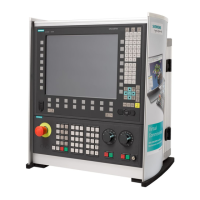
Do you have a question about the Siemens SINUMERIK 840Di sl and is the answer not in the manual?
| Brand | Siemens |
|---|---|
| Model | SINUMERIK 840Di sl |
| Category | Control Unit |
| Language | English |
Description of the OP 012 operator panel front components and layout.
Explanation of the operator panel keyboard elements, symbols, and softkey functions.
Explains the function and usage of the EMERGENCY STOP button in emergency situations.
Describes the three operating modes: JOG, MDA, and Automatic, and their functions.
Overview of the CNC data structure, including NC memory and HMI hard disk components.
Describes the three operating modes: JOG, MDA, and Automatic, and their functions.
Describes how to start, stop, abort, and continue part program execution.
Describes how to toggle between machine and workpiece coordinate systems for display.
Details how to display current spindle values, setpoints, and override status.
Provides status information for synchronized actions to support commissioning.
Describes how to redefine the control zero in the machine coordinate system using the Preset function.
Explains the Set actual value function as an alternative to Preset for defining coordinates.
Explains the Ref Point function for synchronizing control and machine after Power ON.
Describes the JOG mode for manual operation, including synchronizing the system and activating manual control.
Explains how to manually traverse selected axes using increment or rapid traverse modes.
Explains the REPOS function to retract the tool after program interruption and display path distances.
Explains MDA mode for writing and executing part programs block by block.
Details the Automatic mode for fully automatic execution of part programs for machining.
Describes storing and erasing workpieces and part programs in NC working memory.
Describes switching to the program editor to monitor execution and edit programs with syntax errors.
Explains how block search allows starting part program execution from any block.
Details functions to change program sequence like DRY, ROV, M01, SBL.
Overview of tool data, including offset structure and types.
Details the function and main screen for managing tool offsets.
Introduces the tool management system, organized by configurable lists for different tool views.
Describes the system's capabilities for selecting tool types and assigning geometric/technological data.
Explains how to view and edit tool data, including corrective values, monitoring, and user data.
Introduces zero and work offsets, explaining their reference to machine and workpiece zero points.
Details the default editor for creating and editing part programs and text files.
Introduces free contour programming as a support tool for creating simple and complex contours.
Guides on programming a contour by selecting/creating elements and using the contour calculator.
Introduces program simulation as a self-contained process for graphical testing of part programs.
Guides on how to use the simulation function, including terminating and matching data.
Introduces program management for organizing, storing, and displaying data by criteria.
Explains the necessity of selecting workpieces and part programs before execution.
Details storing programs in NC memory and erasing them after execution.
Explains file and directory management operations: create, load, save, delete, copy, and change attributes.
Overview of the diagnostics main screen, displaying alarms, messages, and status information.
Introduces service displays for visualizing operating states of machine axes using traffic light indicators.
Details the Service Axis display for checking setpoints, actual values, and control loops.
Guides on obtaining information about PLC memory locations and changing them.
Introduces the Commissioning operating area and the startup main screen for machine configuration.
Explains machine data organization into areas like general, channel, axis, display, and drive-specific.
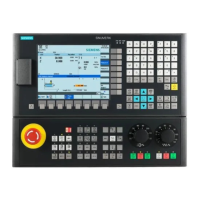
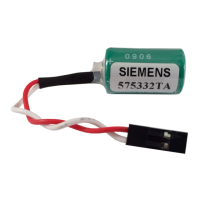
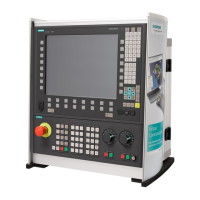

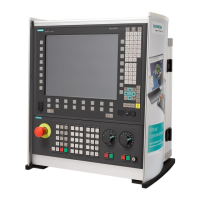

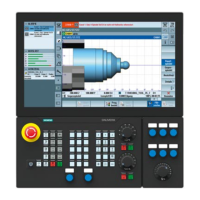
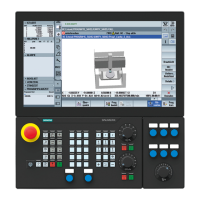
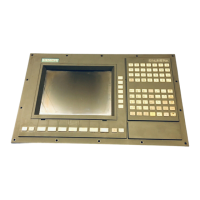
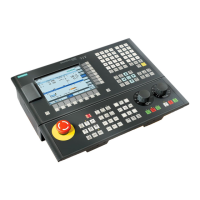
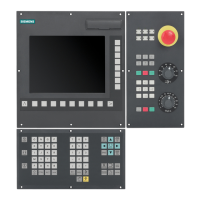
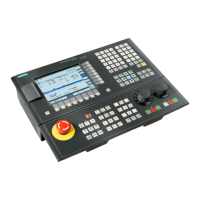
